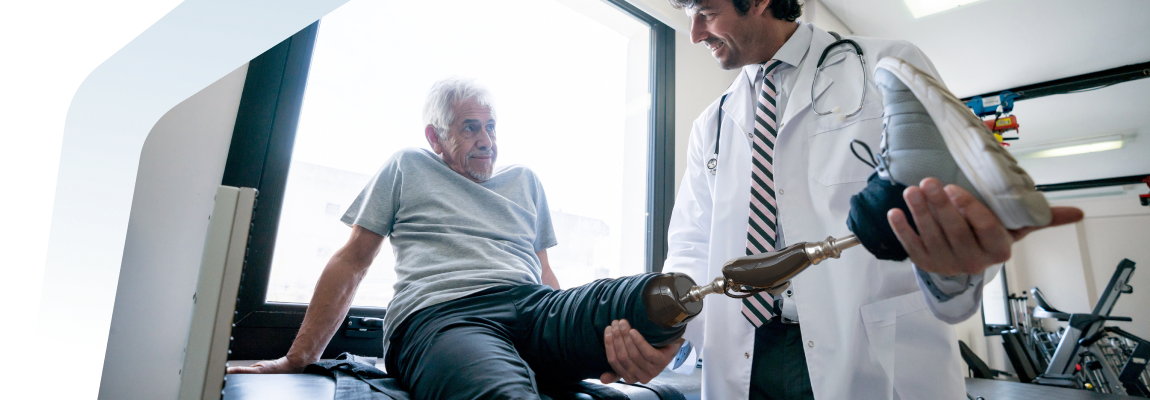
Phantom Limb Pain Treatments
Effective Management Pain Associated with Limb Loss
For individuals with one or more limbs missing, phantom limb pain can be a debilitating and frustrating condition. It can lead to discomfort and impact a person's physical, emotional, and mental well-being. Our interventional pain specialists and dual-board certified physicians at Commonwealth Pain & Spine offer effective treatment options for managing phantom limb pain, providing relief, and improving the overall quality of life.
Who Can Experience Phantom Limb Pain?
Phantom limb pain refers to sensations, including pain, vibration, pressure, and more, felt in the area where a limb has been amputated or congenitally missing. Approximately 64% of people with amputations worldwide experience this. While the pain can change over time, common sensations include:
- Burning
- Twisting
- Shooting
- Crushing
- Pins and needles
- Electric shock
For some, these sensations can persist far longer and eventually become a lifelong problem. Commonwealth Pain & Spine wants to help you find effective treatment options for your unique phantom limb pain.
Finding Relief from Phantom Limb Pain
Phantom limb pain is highly individual, with no two people sharing the same sensations. Therefore, we create personalized treatment plans to address your needs and goals. Possible treatments include:
- Injections: Depending on the severity and frequency of your pain, we may recommend injections to provide relief. These can include nerve blocks, Botox injections, or cortisone shots.
- Medications: Medications such as antidepressants, anticonvulsants, or opioids to help manage your symptoms.
- Transcutaneous Electrical Nerve Stimulation: TENS therapy uses a weak electrical current to disrupt the transmission of pain signals before they reach your brain.
- Neurostimulation: Brain and spinal cord stimulation can treat phantom limb pain by implanting tiny electrodes near the spine and sending an electrical current to alter pain signals.
In some cases, surgery may be needed to address nerve damage or other issues causing your phantom limb pain. Our experienced team at Commonwealth Pain & Spine will discuss all treatment options with you and guide you to the best solution for your situation.
Our Approach to Phantom Limb Pain Management
If you're experiencing phantom limb pain following an amputation, our compassionate team at Commonwealth Pain & Spine is here to help. Start your journey to relief by completing our online self-referral form. We'll look over your information, get a referral from your PCP, and schedule your first consultation.
Here's what you can expect when seeking treatment for phantom limb pain at our practice:
- Consultation: During your first visit, our experienced physicians will thoroughly assess your symptoms, medical history, and the circumstances surrounding your amputation to develop a personalized treatment plan.
- Personalized Treatment: Your tailored treatment plan will address your unique needs, utilizing innovative therapies to target the root cause of your phantom limb pain.
- Ongoing Support: We'll schedule regular follow-up appointments to monitor your progress, adjust your treatment plan as needed, and provide ongoing support to help you achieve lasting relief.
With best-in-class physicians, innovative treatments, and personalized care, Commonwealth Pain & Spine is committed to helping you find relief and improved quality of life from phantom limb pain!

-
It's Easy to Get Started
Start your journey with our compassionate guidance and expertise.
-
 Request an Appointment
Request an AppointmentFind an office and share your details in our request appointment form to start the process of finding relief.
-
 We'll Connect With Your Physician
We'll Connect With Your PhysicianOur team will contact your primary care physician to secure the necessary information.
-
 We'll Schedule Your Appointment
We'll Schedule Your AppointmentOnce your physician’s referral is received, we'll reach out to schedule your initial appointment. We aim to get you seen within two weeks.



